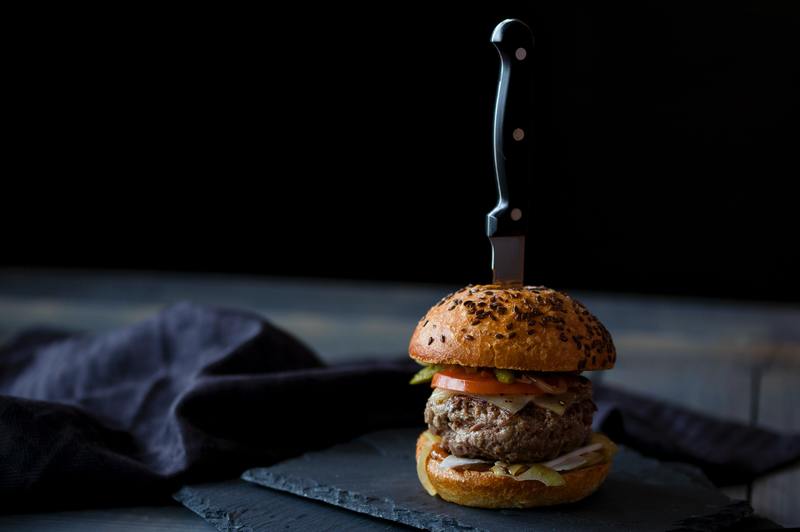Are you reading this post because you want to know what temperature kills mold spores in food? If yes, know that hot temperature is the answer you are looking for.
Save yourself some time and fortune. Familiarize yourself with what molds are, what temperature molds grow, and what temperature gets rid of mold spores in food.

Lastly, learn the heat methods you can use to eradicate molds. Now, let us get started.
What Are Molds?
Molds are considered fungi, a microscopic one to be exact. Carolyn Raab, an extension food and nutrition specialist, said that microscopic organisms are divided into three different groups: yeast, bacteria, and molds.
The latter grows because of released tiny spores into the air. These spores are harmless most of the time, but if they fall into moist material, they immediately increase in size and become much more dangerous.
So, one key question is: where are these damp spots located? Please be aware that these could be everywhere.
It could be inside or outside of your house, so don’t be surprised if you’ll find mold in the dishwasher or on the newly painted exterior of your car. Do not forget that food could be contaminated too.
We hope these realities did not scare you because there is nothing to be scared of at all. You already know what mold spores are; it is now time for you to know at what temperature mold grows.
What Temperature Do Molds Grow?
Temperature is one of the essential factors in promoting mold growth, together with moisture and oxygen.
For your reference, molds grow in the temperature between 77-86℉. It happens especially when the air is a lot more humid than usual.
Furthermore, if the temperature drops at 40 ℉, molds cannot grow anymore. With that information, we hope you are enlightened why refrigerators are set only at 39℉.
Molds can increase in size all year round just before you can notice it. They are not your seasonal enemies, so it is a must to have the wisdom on what condition mold grows.
Before you proceed, know that the next part will focus on the specific temperature that kills mold spores in food. If you need extra guidance in removing molds from couch cushions, you can look into this helpful article.
What Temperature Gets Rid Of Mold Spores In Food?
Are you aware that mold spores do not die in cold weather conditions? Do not be shocked because that is the truth!
If that is the case, it’s safe to assume that only heat can kill mold spores in food. Mold thrives in cold and moist areas, so these are exactly the things you need to avoid to ensure that your home and kitchen is free from this nuisance.
Heat exposure
Remember that mold spores in food are sensitive to heat treatments and are vulnerable to heat, especially if the temperature is between 140-160°F (60-71°C). With that in mind, you can use specific methods to get rid of molds.
Heat Exposure Methods To Kill Molds In Food
1. Boiling
At sea level, water’s boiling point is 212 degrees Fahrenheit or 100 degrees Celsius. This process will surely help you in killing mold spores that contaminate your food.
Remember that heat must pierce through at whatever and wherever the mold is growing into to make the boiling process effective. Leave the food in the water for a while to make sure that your efforts are effective.
2. Baking
It is public knowledge that baking is a way to cook food through dry heat. To put it in simpler terms, you don’t need moisture when you are baking.
Moisture is one main factor why microorganisms like molds grow, and baking deprives them of that. In addition, this process generates a high temperature of heat.
It is mentioned before that heat kills molds, so if you want to get rid of the ones in your food, you can consider this method.
3. Microwaving
A study conducted to kill molds in corn concluded that mold spores shrunk after the treatment, compared to what they were before the treatment: smooth and full. The method used for this study is microwaving.
Just in case you are not aware of what microwaving is, remember that it is a method for reheating and defrosting food.
Numerous people believe that microwaving is unhealthy because of the thermal energy produced in this process. To prove that it is not, the same study implied that the effects on the corn existed as non-thermal during the microwave sterilization process.
Conclusion
Food is essential for every living organism since it helps in maintaining a healthy yet balanced body. You should never take it for granted by letting it become moldy.
Since you already know what molds are — the temperature where they develop, what temperature kills mold spores in food, as well as the methods you can use to heat your mold-contaminated food — it will be much easier for you to now protect and appreciate these necessities.
